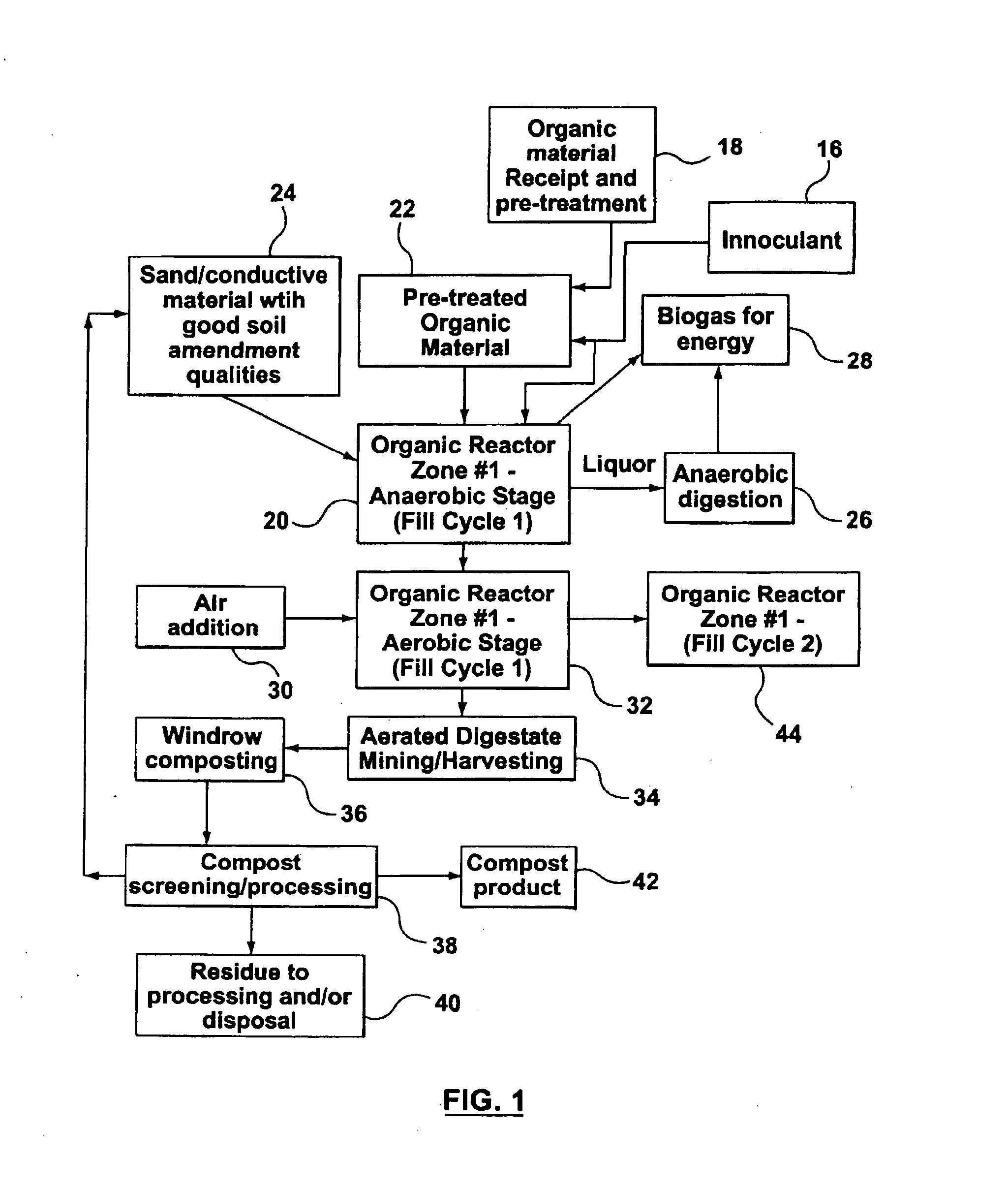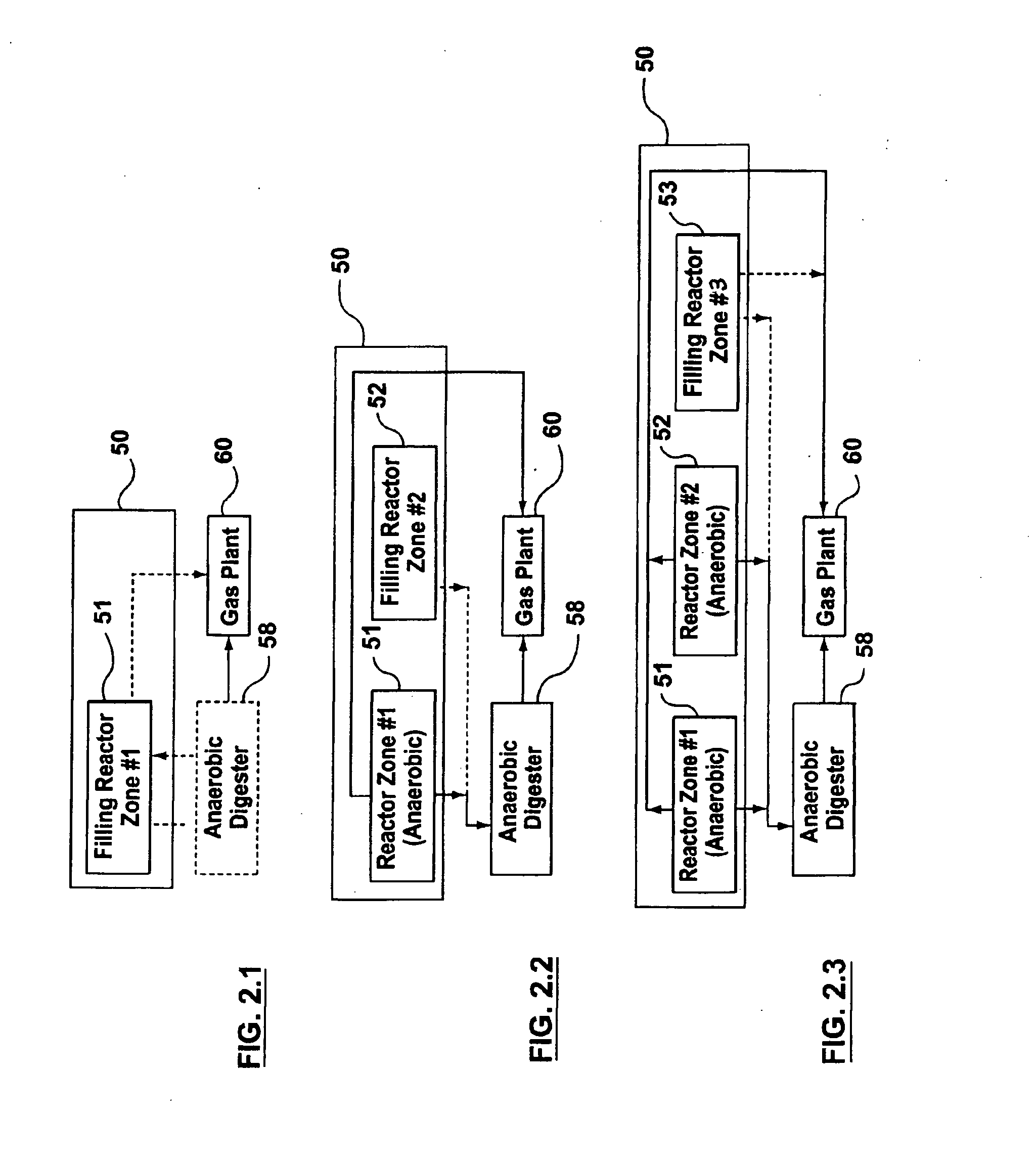System for the production of biogas and compost from organic materials and method of operating an organic treatment facility
a biogas and compost technology, applied in the direction of liquid degasification, multi-stage water/sewage treatment, separation process, etc., to achieve the effect of enhancing anaerobic decomposition
- Summary
- Abstract
- Description
- Claims
- Application Information
AI Technical Summary
Benefits of technology
Problems solved by technology
Method used
Image
Examples
Embodiment Construction
[0039] The invention provides a method of operating an organic treatment facility which is generally illustrated in the flowchart of FIG. 1. The operations occurring in a single reactor zone identified as Zone #1 begin with the delivery of organic material 18 to a receiving area and its preparation for placement in a reactor by ripping bags and other containers in which the organic material is delivered, in order to render the organic material accessible to moisture, microorganisms and other conditions that promote biological degradation and to optimize liquid and gas movement within the organic material mass after placement. Pretreated organic material 22 is placed and distributed within a reactor for anaerobic decomposition 20 using a grapple or bucket or other means that minimizes the degree of material compaction. Bag or container ripping may also be accomplished after the material has been placed in the reactor using low bearing pressure equipment. At regular intervals, but at ...
PUM
| Property | Measurement | Unit |
|---|---|---|
| depth | aaaaa | aaaaa |
| size | aaaaa | aaaaa |
| size | aaaaa | aaaaa |
Abstract
Description
Claims
Application Information
 Login to View More
Login to View More - R&D
- Intellectual Property
- Life Sciences
- Materials
- Tech Scout
- Unparalleled Data Quality
- Higher Quality Content
- 60% Fewer Hallucinations
Browse by: Latest US Patents, China's latest patents, Technical Efficacy Thesaurus, Application Domain, Technology Topic, Popular Technical Reports.
© 2025 PatSnap. All rights reserved.Legal|Privacy policy|Modern Slavery Act Transparency Statement|Sitemap|About US| Contact US: help@patsnap.com



